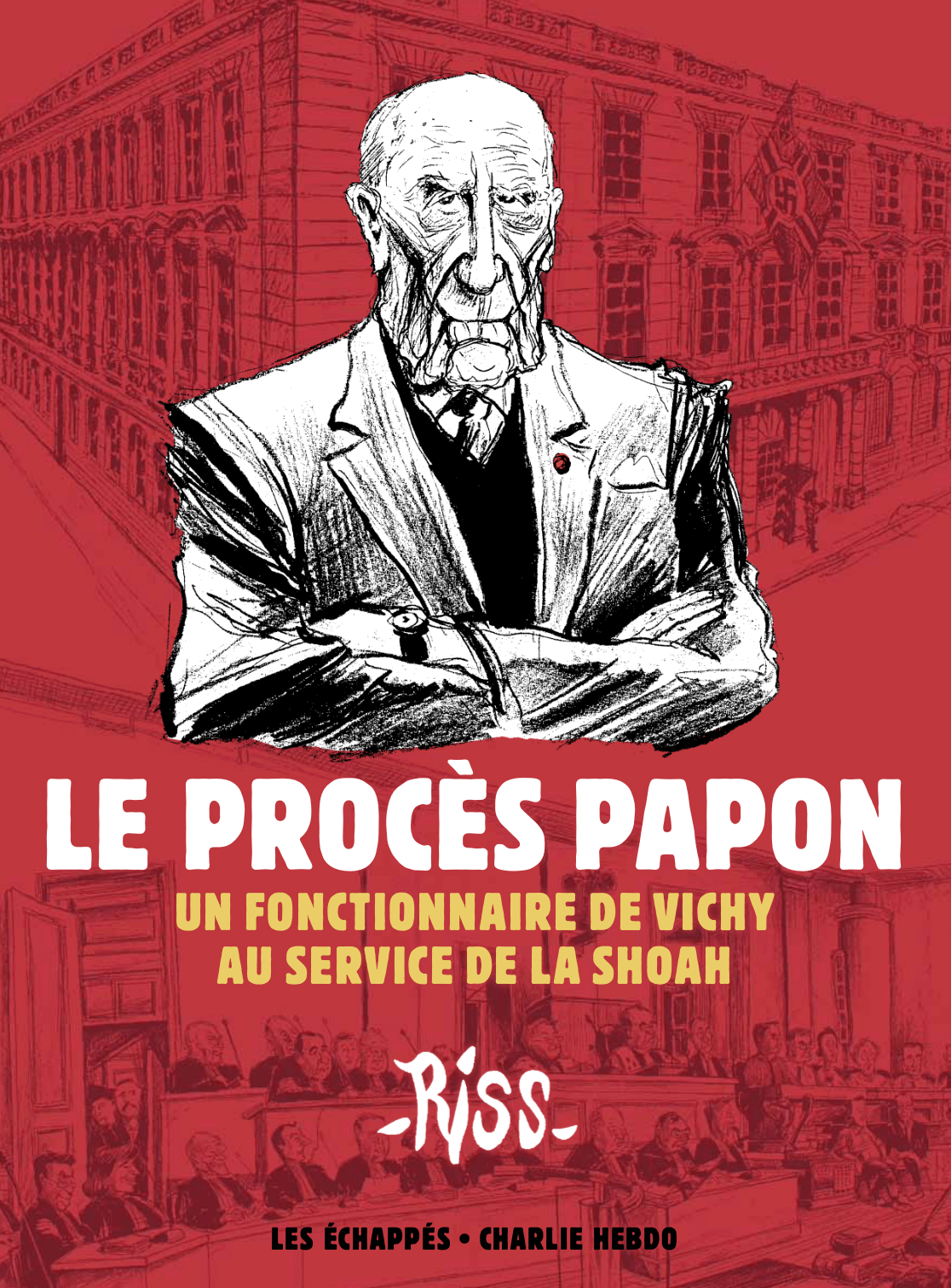
from October 19th, 2023
We propose you to discover resources (interviews, publications, etc.) around the theme of the exhibition «Riss: the Papon trial».
Exhibition book-catalogue
Riss: the Papon trial

Publishing house: Les Échappés
ISBN: 9782357661370
Foreword by Laurent Joly
Number of pages: 144
Price: 26 euros
Release date: 14 September 2017
On sale at the bookshop of the Shoah Memorial
3 QUESTIONS TO RISS:
You attended the trial of Maurice Papon. Of this extraordinary trial, you gave one of the few complete reports and the only one that is illustrated.
What is the strength of your drawings?
RISS: The drawing allows to make a subjective account of the trial.
It is a personal point of view, with assumed subjectivity, but which tries to reconcile the veracity of the facts, of the events that took place in the trial, with my perception. The drawing allows to graphically affirm the vision I had of this event. The features of the actors, their expression, sometimes accentuated, is the means at my disposal to share with the reader what I felt, while informing him of what was said in the court.
What was the most striking story of the trial for you?
RISS: There are many important moments in this trial because it was possible to see important figures of the Resistance and witnesses of this time who suffered the events. I don’t know if we can talk about “anecdotes”, but a character like Bouchinet-Serreulles, who was acting after Jean Moulin’s arrest, impressed me a lot, because we had in front of us someone who was the link between Jean Moulin and us.
Jean Moulin then became an almost real character, through the presence a few meters from us, of one of those who had worked with him. It was no longer an almost mythical figure, almost abstract whose name can be seen on bus stops or squares. The other character that had marked me was Mr Babin who was deported to Auschwitz around April 1942 (if I am not mistaken), that is to say at the time of the implementation of the extermination camp. He explained to us that the first job he was assigned was to put the bodies of people gassed in the pits and to cover them with lime. He described this by making gestures to make us understand how he was doing it. This meant that he still had the images of these scenes in his head since 1942. That’s when I understood what the term “imprescriptibility” meant.
How did you personally experience it?
RISS: Personally, I understood better the impact of these persecutions on Jewish families in France. The people I interviewed told me about these arrests, at first like family tragedies, families destroyed, dislocated, destroyed. It was the family circle that was first impacted by these arrests. The political dimension was almost secondary, although it was obviously present. They told me first of all about their mother, their father, their brothers, their sister, their uncles, their aunts, their grandmother, their grandfather, their cousins, everything that constitutes a family, which seems so obvious to us, and from which they were forever deprived.

Bibliography
See the bibliography of the exhibition.
Think about consulting the Shoah Memorial’s online bookstore or requesting your books from the museum bookstore during your visit. Our staff would be happy to help you with information and order the books you are looking for if necessary.